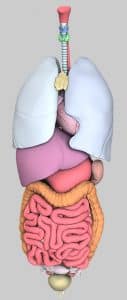Learner-Centered Tip of the Week: Four Tips for Crafting Driving Questions
CompetencyWorks Blog
This post originally appeared at the Learner Centered Practices Blog on October 21, 2017. Belolan is the instructional coach for RSU2 in Maine.

A high quality driving question provides motivation for learning. Often when we first start working with driving questions, or essential question, to frame learning the questions we come up with can feel a little, well, off. Just like with any skill, crafting good driving questions takes practice. The four tips below can help you make some gains. For each tip there is an example of a driving question using the following learning target:
Understands the structures and functions of the major body systems
1. Focus on the enduring understanding of the learning target. Many standards, competencies, and targets come with a lot of foundational skills and understandings attached. When we only think about all the pieces, we miss the big picture. Pulling back and focusing instead on the big picture can help us see what the essence of a target is. Here is an example using our test target:
How do body systems work together to keep our bodies running?
2. Place the target in a larger context. Sometimes a learning target is interesting enough in itself to motivate learning for most learners, others are not. If a particular targets feels dry when you think it, or try to make a question of it, then try thinking about where the target fits in the real world. The target itself should rarely be its own context for learning, and putting targets in a larger context makes them feel more relatable and interesting to many learners. Think about this example for our test target:
How do doctors and scientists know what is happening inside the body?
3. Find the debate within the target. There is nothing like a good academic argument to get learners interested in a topic. No, really. If learners get a chance to debate, take sides, and try to prove other people wrong about something almost anything becomes interesting and worth learning about. The debate within a learning target does not have to be a big heated one, just something that makes learners think and ask a few more questions. Consider this example with our test target:
To what extent should body systems be manipulated or enhanced by technology?
4. Find the fun in the target. We learn the most when we are enjoying ourselves, and all of us can describe times when we were teachers or learners when we had a ton of fun with a particular project, lesson, or unit. This one feels similar to putting the target in a bigger context, and the big difference is that this context should be smile inducing. Think about what a 4 year old would find awesome about the target, even if the learners working on it are 17. Try not to giggle at this example with our test target:
Why does our body need blood, bile, brains and other weird goo?
See also:
- Learner-Centered Tip of the Week: Giving Learners MORE Voice
- Learner-Centered Tip of the Week: Including Multiple Readiness Levels
- Learner-Centered Tip of the Week: A Move to Increase Agency
Courtney Belolan works at RSU 2 in Maine where she supports K-12 teachers with performance-based, individualized learning. Courtney works closely with teams and teachers as a coach, and with the school and district leadership teams as an instructional strategist. Courtney has worked as a 6-12 literacy and instructional coach, a middle level ELA teacher, an environmental educator, and a digital literacy coach. Her core beliefs include the idea that the best education is one centered on student passions and rooted in interdisciplinary applications, and that enjoying learning is just as important as the learning itself.